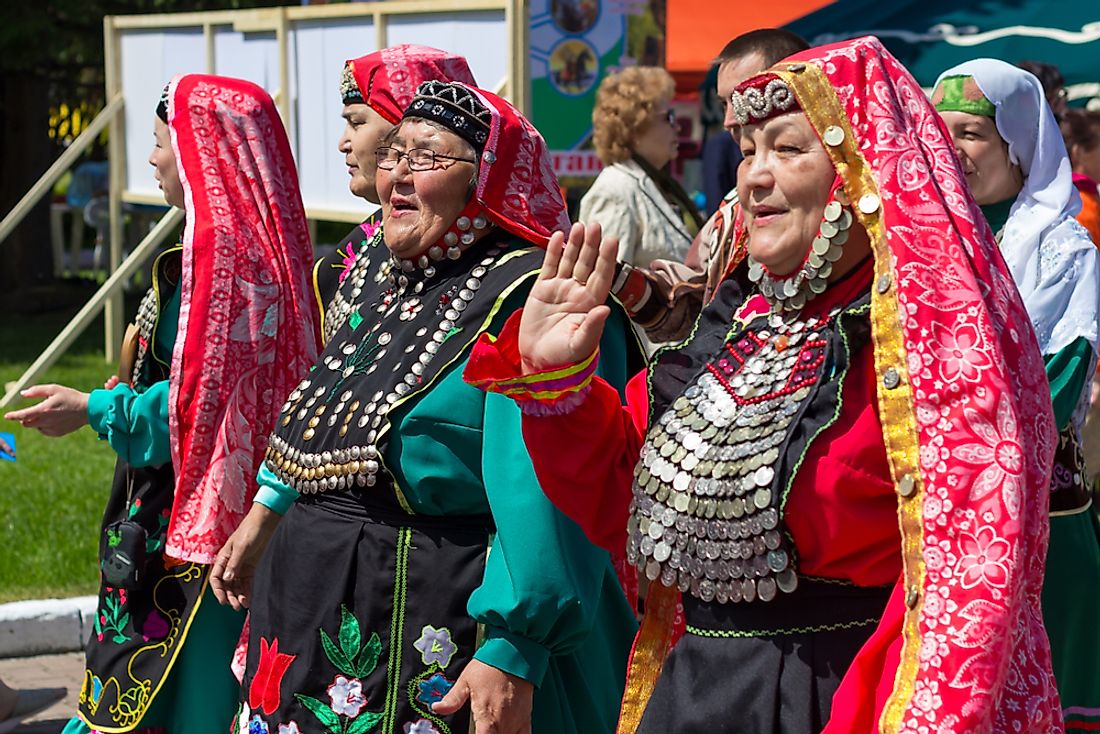Who are the Tartar People?

The Tartar people, also spelled as Tatar, are Turkic-speaking people that are mainly found in west-central Russia and other former Soviet Republics. Initially, the name “Tartars” was used to refer to anyone who originated from the vast Central and Northern Asian region then known as the Tartary. However, the term has evolved and currently refers to one of the groups that speak the Turkic language. The largest Tatar group is the Volga Tatar who originated from the Volga region. They account for approximately 53% of the total population in Tatarstan. As of 2002, there were approximately 6.8 million Tartars worldwide of which 5 million live in Russia.
Origin of the Name
The name Tatar may have been coined in the 5th century by nomadic Mongolic-speakers in the Tatar confederation. The name was used to refer to the population of the former Golden Hordes in Europe such as the Crimean, Kazan, Siberian Khanates, and Astrakhan. “Tartar,” another form of “Tatar” may have originated from French or Latin and came to Western European Language from Persian and Turkish language. The extra “r” shows the western form of the name.
History of the Tatar People
In the early 13th century, several nomadic groups joined the Genghis Khan’s army, leading to a fusion of the Turkic and Mongol elements. The army invaded the Pannonian Basin and Rus’ and became known as Tartars or Tatars to the Europeans. After the collapse of the Mongo Empire, the Tatars were identified as people living in the western part of the empire, referred to as Golden Horde. The Tatar Khanates’ dominance of Central Asia came to an end in the late 15th century. However, the gradual but steady expansion of the Russian territory from the 16th to the 18th century led to their absorption into the territory.
Tatar Groups
The Tartars are divided into several groups, mainly by their origin or settlement. The two largest groups are the Volta Tatars and the Crimea Tatar, native to the Volta region and Crimea respectively. Other smaller groups include Astrakhan Tartars and Lipka Tartars in Europe and Siberian Tartars in Asia.
Volga Tatars
There are approximately 1.5 million Volga Tatars in the Volga and Ural regions and accounts for approximately half the population of the Republic of Tatarstan. They are the most industrially active and wealthiest Tatar group. The group speaks several dialects of the Tartar language. They also speak Russian, especially outside Tatarstan, and several other languages worldwide.
Crimea Tatars
There are approximately 650,000 Crimea Tatars. This group emerged as a nation during the time of the Crimean Khanate which was a Turkic-speaking Muslim state. They adopted Islam in the 14th century, with Crimea effectively becoming a center of Islamic Civilization. The group is subdivided into three groups, namely the Tats, the Nagoya, and Yaliboyu. The Crimean Tartars are also present in Bulgaria and Romania.
Other Tartar Groups
Lipka Tatars is a group of Tartars who first settled in the Grand Duchy of Lithuania around the 14th century. They are currently found in Poland, Belarus, and Lithuania. There are about 80,000 Astrakhan Tatars worldwide, with the majority living in Astrakhan Oblast. The Siberian Tatars mainly occupy the Siberia and are approximately 6,779 in Russia.











